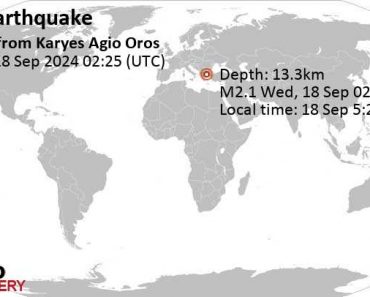In Competition 3365 you were invited to submit an extract from a PhD about an aspect of street culture. Obviously this was inspired by Rachael Gunn, aka Raygun, the Australian academic/Olympic break-dancer who wrote a PhD on the cultural politics of breakdancing. This intro has to be short to make room for all the long words. Respect to Bob Newman, W.J. Webster, Bill Greenwell, Mark Hunter Brown and others – and the winners get £25.
Citius, Altius, Grooviest: An Investigation into the Classical Origins of Breakdance as an Olympic Sport. With an Excursus on Biblical Parallels.
In view of objections to breaking as a legitimate Olympic activity, its origins are here sought in the context of early Greek history, from which it may be inferred that the movements, especially those at ground level with sudden and unexpected twists, were intended originally as a military activity involving two warriors, which had to end in the death of one competitor. Several of the battles in the Iliad may be interpreted in this pattern. The moves would have been practised in individual training in the agora by virile young men. In pre-Hellenic/early Hebraic social tradition, II Samuel 6 makes clear that King David performed such moves in a public place before onlookers(as in the present-day Olympics), though this time as a solo performer, rather than adversarially…
Brian Murdoch
The gradual outphasing of the intrinsically go-to pejorative-suggestion term graffiti (and also its singular, graffito, used only by reactionary hemi-demi-semi scholars) has meant that street art has gathered a wide enchiridion of labels. The preferred term in this thesis will be Performance Scrawl (henceforth PS). As Smartass showed in his groundbreaking 2014 study (‘Spraycans in Existential Context’ – see Bibliography, Vol 17), what may appear in the pattern to be an accidental abbreviation of wiggle-wiggle–wiggle to wiggle-wiggle-wigg is in fact a clear reference to the unpredictability of gravitational pull. The flippant pseudo-counter-argument of Goodsense (2015), that ‘the can had just run out of paint’, will be given no credence here. And where philistine road-users have complained at their inability to read billboards enhanced by PS, we shall follow the philosophy of Emptyhead’s 2016 essay, ‘Road blindness: the irrelevance of direction in an art-powered world’.
Nicholas Lee
The essence of breakdancing being precisely the fracture of pre-existing (hegemonic) dance-modes (Barthes, 240), the genre functions as a rich source of the counter-cultural capital metonymised in the descriptor ‘Street’ (Deleuze, 1998, 65n). That signifier, however, no longer relates to specific ‘streets’ (e.g. in Compton) but has become ‘de-localised as the location of a non-localisable locus’ (Prothero, 26), and thus purely mythic. On these grounds an Australian breaker might think it appropriate to incorporate specifically Antipodean features such as the kangaroo-hop into their routine (Gunn 2024, passim). Recently, however, with the genre’s re-imagination as ‘Sport’, ‘rules’ now discourage breaking’s original spirit of ‘proto-carnivalesque improvisation’ (Bakhtin 1965b, 268); tension has therefore arisen between the ideal of freedom implied by its conceptualisation as artistic improvisation and the (neo-phallic) rigidity (Orbach, 267n) imposed by patriarchal gatekeepers such as official judges, even in an Olympics revitalised by drag queens and blasphemy.
George Simmers
The objective of this research is to challenge the presumption of misogyny in street dance, with particular reference to hip hop. D Badboy, renowned for his gangbang style, noted in his seminal work, ‘Yo bitch, sit on this’ (2017), that hip hop is ‘an inclusive environment’. The report, ‘Sexist Language Undermines Terpsichorean Standards’ (SLUTS 2019), references a valuable framework, ‘Hip hop Ongoing Evaluation Systems’ (HOES), supporting Badboy’s thesis. This research aims to endorse these existing studies by surveying a representative sample of hip hoppers, a control group of 99 males and a treatment group of one token female. The latter, supported by SLUTS and HOES, will be empowered to accept the conclusions of the research. These findings will then be communicated using the technique of mansplaining. References: Shyster and Lyer, (2019) ‘Celebrating Equity and Inclusion in Street Dance’. A. Horniman (2020) ‘Hip Hop: Whores be all on my d***’.
Sue Pickard
Through marshalling of statistical datasets, presentation of oral histories and that aggrieved, ultra-liberal justification of any behaviour whatsoever which constitutes Sociology, this thesis will challenge the contention (Gulch and Drebbs, 1998) that skip–diving is a critique of capitalist hegemony. Rather, it will demonstrate their symbiosis, citing built-in obsolescence and the skip diver’s development of industry–specific craft skills (balancing one-legged on a thicket of entangled desk lamps, diving invisibly for the shelter of enskipped materials so as not to startle passing milkmen) as proof of the mutual dependence of host and parasite. Echoing Proudhon, 1840, it will conclude that, all property being theft, even junked property is deserving of a thief and said thief, far from being an entrepreneur, performs a socially utile public service deserving respect and remuneration. I append also an ethnographic study A Year Among the Dalston Skip Divers, together with its fruits, 18 broken toasters.
Adrian Fry
Arguments structured around the rudimentary opposition of ‘graffiti, art or crime?’ dissolve into vacantly subjective definitions or collide with blind walls of traditionalism. In a word, futility. The tie-break needed is an address to specifics, a ‘micro-culture’, if you wish, together with a theoretical framework that anchors the particular in the unstable dynamics of history. For this reason, the approach here centrally includes a case study of exceptionalism (‘all differences both define and critique the normative’, Roland Barthes has written), namely: the multi-vocal confluence of bus shelter graffiti in the Muswell Hill area of north London. Do we encounter a viable binary distinction here? For example, the ‘abri poster’ – legal, professional, targeting the affluent consumer – versus the spontaneous ‘scripto-visual’ aesthetics of anonymous guerrillas? It would be easy to say so. But as Gramsci warns us, ‘the old is dying and the new cannot be born’.
Basil Ransome-Davies
No. 3368: Chapter and verse
You’re invited to update a well-known story from the Bible so that it ‘speaks to’ life in 2024 (150 words maximum). Please email entries to competition@spectator.co.uk by midday on 18 September.







